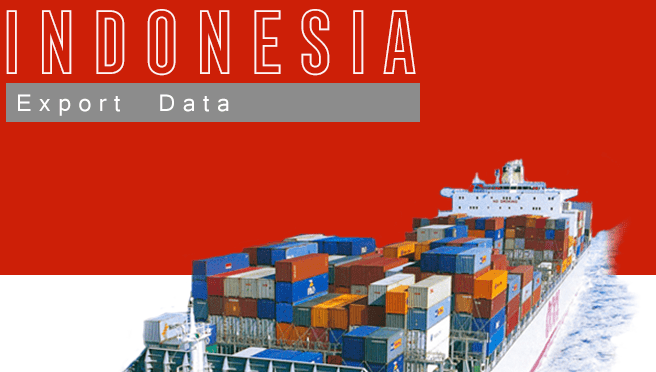 Trade Data
Trade Data
 2024-09-18
2024-09-18
Indonesia, the largest economy in Southeast Asia, holds a significant position in global trade. As a member of the G20 and ASEAN, Indonesia has become a vital trading hub, with its trade data highlighting strong exports of commodities such as palm oil, coal, and natural gas. In recent years, Indonesia’s trade data has shown consistent growth in both exports and imports, with expanding trade partnerships across Asia, Europe, and the Middle East.

Export Trade Data Performance
According to recent trade data, Indonesia’s exports are primarily driven by natural resources. In 2023, palm oil remained the country’s largest export product, accounting for a major share of Indonesia's overall trade data. Coal, petroleum gas, rubber, and electrical machinery are other significant exports. Indonesia’s key trading partners include China, the United States, Japan, and India. Notably, China has emerged as Indonesia’s top export market, which is evident in the country's export trade data.
>>>Check Indonesia trade data now<<<
The Indonesian government has been working to diversify its export portfolio beyond commodities. Trade data shows steady growth in sectors like automotive and electronics manufacturing. In particular, Indonesia’s investment in the nickel and battery industries is positioning the country as a future leader in the global electric vehicle (EV) supply chain.
Import Trade Data Trends
Indonesia's import trade data reflects a diverse array of goods, including machinery, chemicals, steel, and refined petroleum. In 2023, the country saw a significant increase in imports of consumer goods and industrial machinery, driven by rising infrastructure projects and growing domestic demand. Trade data indicates that China remains Indonesia’s top import source, followed by Singapore, Japan, and South Korea.
>>>Check Indonesia trade data now<<<
The government’s “Making Indonesia 4.0” initiative has further boosted the need for high-tech machinery and industrial imports. According to trade data, this aligns with Indonesia’s vision to become a regional manufacturing hub and increase its industrial capacity in advanced sectors.
Trade Balance and Challenges
Indonesia’s trade data shows a positive trade balance in recent years, primarily due to strong commodity exports. However, fluctuations in global commodity prices present a challenge to maintaining stable export revenues. Trade data analysis also highlights internal challenges such as bureaucratic inefficiencies, infrastructure limitations, and logistics issues, which Indonesia needs to address to further enhance its global trade competitiveness.
Leveraging Tendata for Trade Data Insights
Businesses looking to capitalize on Indonesia's trade opportunities can benefit from platforms like Tendata. Tendata offers in-depth trade data analysis, enabling companies to monitor Indonesia’s import and export flows, identify new market opportunities, and track competitors’ trade activities. By using Tendata, businesses can access real-time trade data, which helps them make informed decisions and optimize their global trade strategies.
>>>Get a free online demo now<<<
With Tendata's trade data analytics tools, companies can navigate Indonesia’s dynamic trade environment more effectively and tap into the country's growing markets.
1. Establishing a Customer Database by Country:
Building a customer database is akin to maintaining a work record. Start by using trade tracking features to compile a list of all customers in a country. Analyze each buyer's purchase volume, procurement cycle, product specifications, and supplier system. Finally, filter out 30% of the potential high-quality customers from this country and record them in your customer database, allowing flexible settings by country, time, customer name, follow-up steps, contact phone, email, contact person, etc. (>>> Click For Free Customer Development)
2. Establishing a Customer Database by Peer Companies:
Have a clear understanding of the names of peer companies (including full names, abbreviations, etc.). Use the global supplier network feature to gather all customers of these peers in the system. Analyze these customers based on purchase volume, procurement cycle, and product models. Finally, filter out key customers from your targeted peers and record them in your customer database. (>>> Click For Free Trial Application)
3. Identifying Newly Appeared Customers in Each Country:
Utilize the trade search function to select a country, set date ranges, limit product names or customs codes, and check "latest." The search results will display high-quality customers that have recently appeared in that country during the specified time period. Since these customers are newly emerging, they may have unstable supplier relationships, requiring focused follow-up. Record these new potential buyers in your customer database. (>>> Click For Free Demo Application)

These three approaches for customer development using customs data can be implemented based on the actual needs of the company. Considering market conditions, industry characteristics, strategic requirements, etc., find a method that suits your preferences. The ultimate goal is to establish and organize a categorized archive of high-quality customers. Once suitable customers are identified, the next step is to make precise contact through various channels such as phone calls, email communication, online chat, etc.
Category
Leave Message for Demo Request or Questions


 T-info
T-info T-discovery
T-discovery

 My
Tendata
My
Tendata Market Analysis
Market Analysis Customer
Development
Customer
Development Competitor
Monitoring
Competitor
Monitoring Customer Relationship
Customer Relationship





































































































































